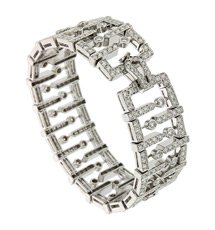Diamonds are one of nature’s miracles. Born out of carbon, bright as day, hard as no other material on the planet, diamonds are often paralleled with snowflakes. Not one stone mirrors another in aesthetics. When buying diamonds, loose or studded in ornaments, the GIA recommends following the standard parameter of four Cs. The 4 Cs stand for cut, clarity, color and carat. However, these aside, there is another one parameter that determines the brilliance of a diamond, and that is the fluorescence. Now the Cs almost all buyers know. The “F” is the least known of the standards.
What is the Fluorescence of a Diamond?
Fluorescence of a diamond is how the stone reacts to Ultra-violet light rays. Every object has a unique way of responding to the UV light. For a diamond, it determines the reflectivity of the stone. Ultra-violet rays have the innate property of making anything appear whiter than they normally appear. In discos, UV lamps make the whites appear whiter, and that is because of the fluorescence in them. Detergents for whites use this same element to make the clothes appear starkly white. So, your diamond’s fluorescence quotient determines how much it will shimmer in ambient light and under artificial lights.
GIA’s Take on It
Fluorescence is actually taken for a defect in the stone. So, the higher the fluorescent rating of a stone, the lower comes the price. However, all diamonds have the tendency to radiate a soft glow when exposed to UV light, so that cannot be entirely avoided. Stats say that about 30% of the diamonds mined around the world have fluorescence of some decimal. GIA brands them as poor quality stones gauzing by its standard. They are usually sold at stores at about 15% discounted prices. They might look colorless and translucent to you, their behavior to UVs report something else.
Should I Aim for High or Low Fluorescence?
Ideally, you should be choosing from stones that have low fluorescence. How can that be good? Well, it is the fluorescence of a diamond that decides if it will exhibit a milky or a clear look in presence of light. Low fluorescence ensures that the stone does not have a hazy appearance, under both natural light and indoor lightings. So, picking a particular stone, you have to look for those with low to very low rating. It will never lose its blaze, regardless of the kind of light it is exposed to.





